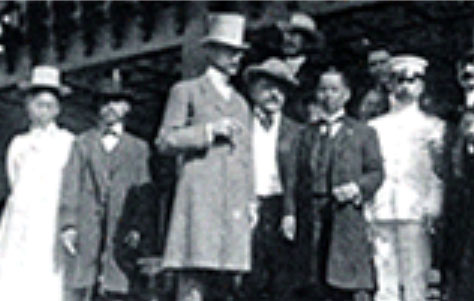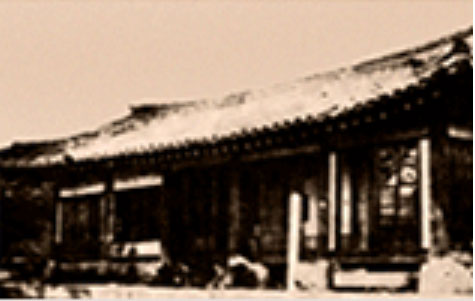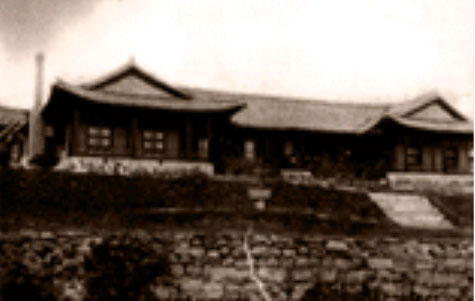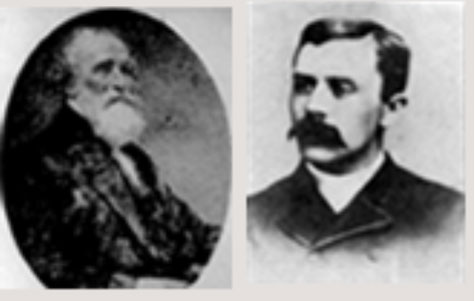Intro to Yanghwajin
양화진이란
The beginning of Yanghwajin as a cemetry for foreigners
-
 [Picture 1: Early Foreign Diplomats
[Picture 1: Early Foreign DiplomatsEmpress Min (1851-1895) and members of her clan brought down the regency of Daewongun and made Emperor Gojong (1852-1919) the ruler of Joseon in his own right. Emperor Gojong abandoned the isolation policy of Chosun and began to build ties with other countries. During such changes, Protestant missionaries, mostly from English-speaking countries, started to arrive at Jaemulpo port to deliver the Gospel to Joseon.
In 1884, Doctor H.N. Allen saved Min, Young lk (218 ), a relative of the royalty, who was injured during the Gapsinjeungbyun. As a result, foreign missionaries came to form a close relationship with the royal families, which then led to the establishment of Gwanghyewon (House of Extended Grace). Gwanghyewon was the first modern hospital in Korea and the predecessor of Severance Hospital.
-
 [Picture 2: Gwanghyewon]During that time, however, missionaries were not allowed to openly spread the Gospel due to the Korean government's ban of foreign religions. Therefore, missionaries sought to penetrate Korean society through other initiatives such as medical practice, education, and social works. Because the missionaries had to rely on indirect, system-wide initiatives to advance the goals of their mission, rather than engaging in evangelism that targeted individuals, the development of Korean Church later came have to have a deep bearing on the history of Korea,
[Picture 2: Gwanghyewon]During that time, however, missionaries were not allowed to openly spread the Gospel due to the Korean government's ban of foreign religions. Therefore, missionaries sought to penetrate Korean society through other initiatives such as medical practice, education, and social works. Because the missionaries had to rely on indirect, system-wide initiatives to advance the goals of their mission, rather than engaging in evangelism that targeted individuals, the development of Korean Church later came have to have a deep bearing on the history of Korea, -
 [Picture 3: Ihwa Hakdang (predecessor of Ewha Woman's University)In 1887, Dr. J. W. Heron became the superintendent of Gwanghyewon, following Dr. Allen. While Dr. Heron was taking care of patients suffering from epidemic dysentery, he himself became infected and passed away on July 26, 1890, at the age of 34. After his death, searching for a suitable location for his burial became an urgent issue, because it was impossible to carry Dr. Heron's remains to Jaemulpo (the only site used as foreigners' cemetery) in the hot summer days.
[Picture 3: Ihwa Hakdang (predecessor of Ewha Woman's University)In 1887, Dr. J. W. Heron became the superintendent of Gwanghyewon, following Dr. Allen. While Dr. Heron was taking care of patients suffering from epidemic dysentery, he himself became infected and passed away on July 26, 1890, at the age of 34. After his death, searching for a suitable location for his burial became an urgent issue, because it was impossible to carry Dr. Heron's remains to Jaemulpo (the only site used as foreigners' cemetery) in the hot summer days. -
 [Picture 4: Diplomat Heard: Missionary Dr. Heron]Therefore, the families of Dr. Heron and foreign missionaries asked for a burial place near Hansung (the old name of Seoul) through a U.S. Diplomat. Augustine Heard. A few years before the death of Dr. Heron, Joseon had entered into the Korean-British Treaty of Amity and Commerce under which Joseon promised to provide a plot of land for a foreigners' cemetery free-of-charge within the boundaries of the trade zone. Based on the "Most Favored Nation" treatment clause under the Korean-American Treaty, Mr. Heard requested a burial place for Dr. Heron in the vicinity of Hansung. After the exchange of several urgent letters between Mr. Heard and Mr. Min, Jong-Mook (1 ) then Secretary of Joseon Foreign and Trade Affairs), Yanghwajin was chosen as the burial ground. Yanghwajin as Foreign Missionary Cemetery
[Picture 4: Diplomat Heard: Missionary Dr. Heron]Therefore, the families of Dr. Heron and foreign missionaries asked for a burial place near Hansung (the old name of Seoul) through a U.S. Diplomat. Augustine Heard. A few years before the death of Dr. Heron, Joseon had entered into the Korean-British Treaty of Amity and Commerce under which Joseon promised to provide a plot of land for a foreigners' cemetery free-of-charge within the boundaries of the trade zone. Based on the "Most Favored Nation" treatment clause under the Korean-American Treaty, Mr. Heard requested a burial place for Dr. Heron in the vicinity of Hansung. After the exchange of several urgent letters between Mr. Heard and Mr. Min, Jong-Mook (1 ) then Secretary of Joseon Foreign and Trade Affairs), Yanghwajin was chosen as the burial ground. Yanghwajin as Foreign Missionary Cemetery
